Join Dr. Jim Sanderson on a Manul Tour in Mongolia
In 2018, I visited Buyandelger Suuri and Otgonbayar Baatargal, who lead Steppe Wildlife, Small Wild Cat Conservation Foundation’s (SWCCF) partner in Mongolia. They were working over 415 miles southeast of Ulaanbaatar, the capital city, near the remote village of Sukhbaatar, where Otgonbayar was raised.
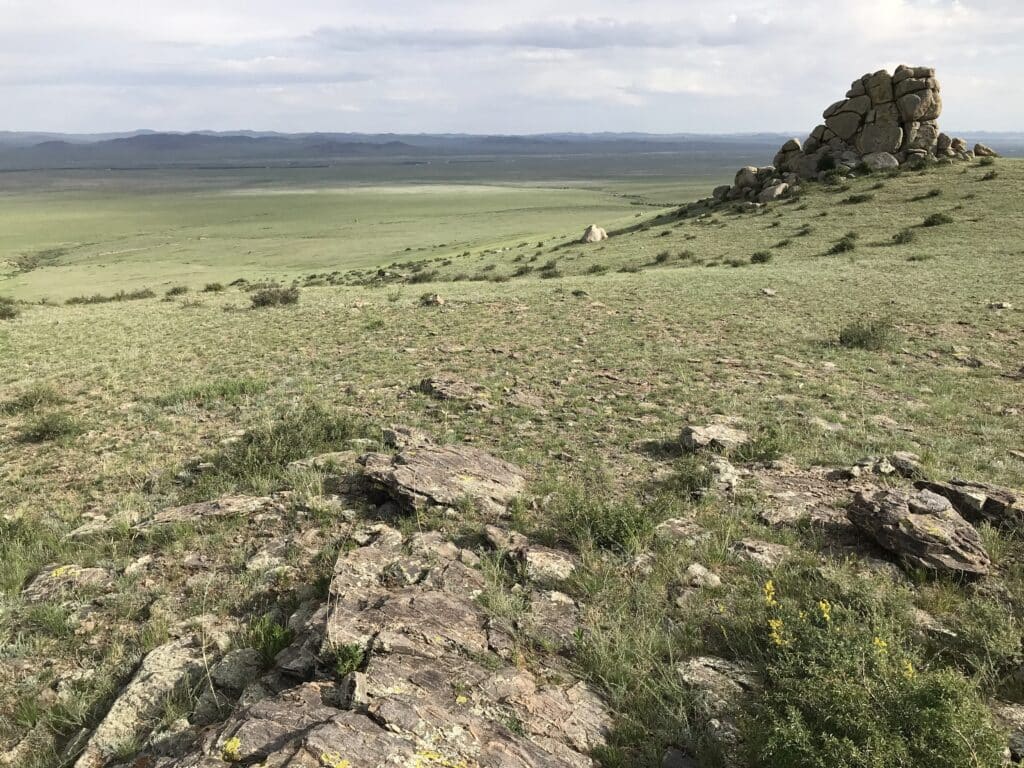
They were living in three gers (what we call yurts) without running water or electricity. Sukhbaatar might have had 500 inhabitants. In the rolling, treeless, green hills, scattered boulder piles, and temporary gers occupied by pastoralists, goats, sheep, cattle, and horses grazed. Marmots had been hunted out for cooking fat, meat, and skins that were sold to Chinese traders for $8 apiece. Manul, also known as Pallas’ cats, were killed in winter to make hats, gloves, and coats (22 manul are needed to make a single coat). Brandt’s voles scurried from burrow to burrow and were hyper-abundant, however. Steppe eagles soared above.
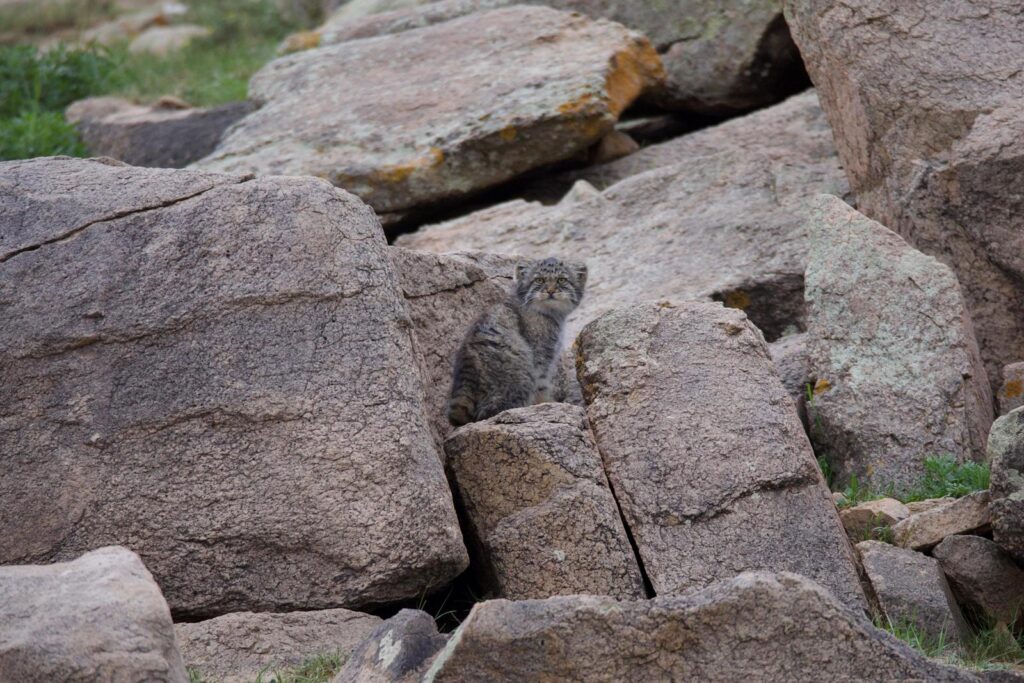
Otgonbayar showed me my first wild manul and kittens in their dens well-hidden in the boulders. I could have reached in and touched them except that I probably would have lost a finger or two. Steppe Wildlife’s manul conservation project was launched during my visit, and both Buyandelger and Otgonbayar are members of the Manul Working Group. Thanks to the dedication and hard work of Buyandelger and Otgonbayar, the results have been nothing less than spectacular. Manul Camp is attracting global attention.
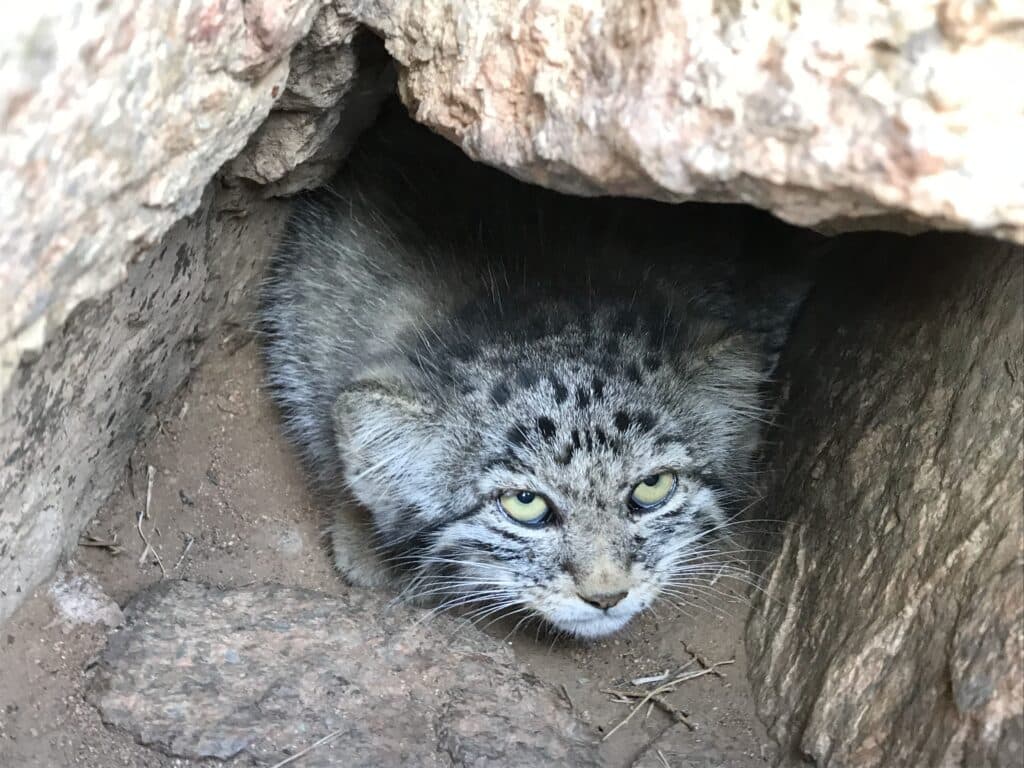
There is a long story better told during a Manul Tour that starts with a visit to Hustai Reserve, home to Przewalski’s horses that are easily observed. Buyandelger and Otgonbayar’s Manul Camp is a fenced site with 10 gers surrounded by trees that attract birds. The IUCN Red List Endangered Mongolian marmot has been reintroduced and has established a fully protected, self-sustaining population. Summer pastoralists have stopped killing marmots and manul. Brandt’s voles remained abundant. Spring rains provided abundant grass and female manul had 3-4 kittens. In the late afternoon of my arrival, I observed five manul. The following day, 18 individuals were observed.
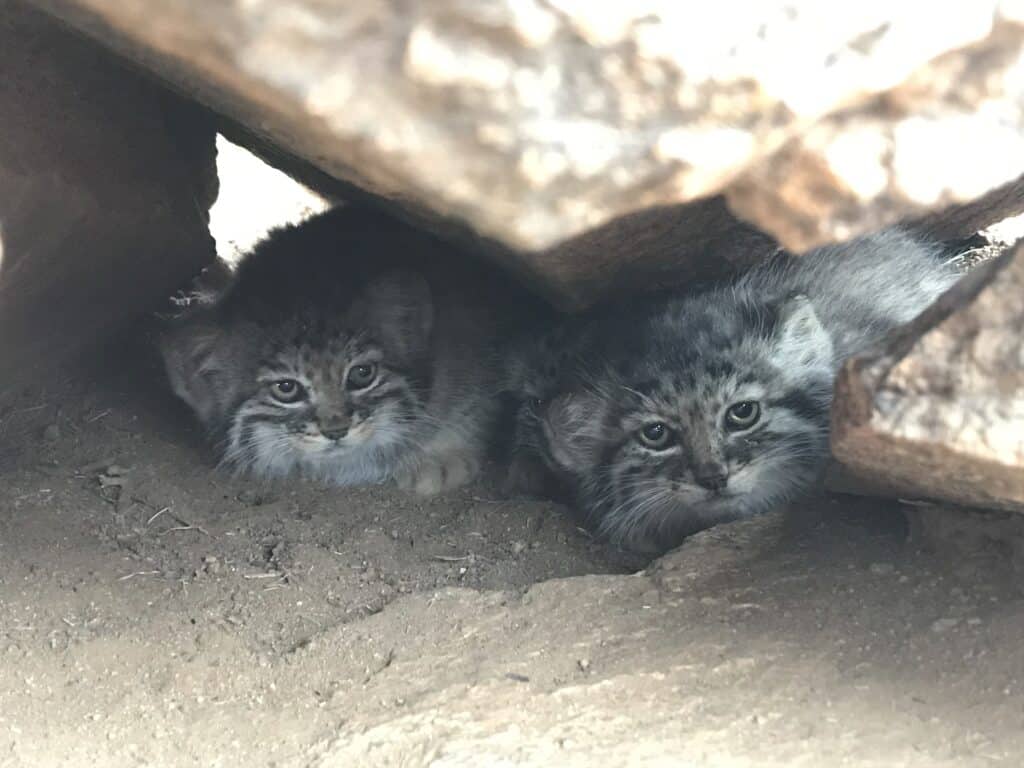
In the days that followed, we observed more female manul with kittens and juveniles, Steppe eagles, Mongolian gazelle, and three Argali (the Mongolian version of Bighorn sheep). In a ger with a flat-screen TV, I watched a feature-length BBC documentary on manul featuring Otgonbayar that was filmed by a Japanese team living at Manul Camp. The BBC also included fives minutes of manul in winter for Frozen Planet II, narrated by David Attenborough, who referred to the manul as the world’s grumpiest cat.
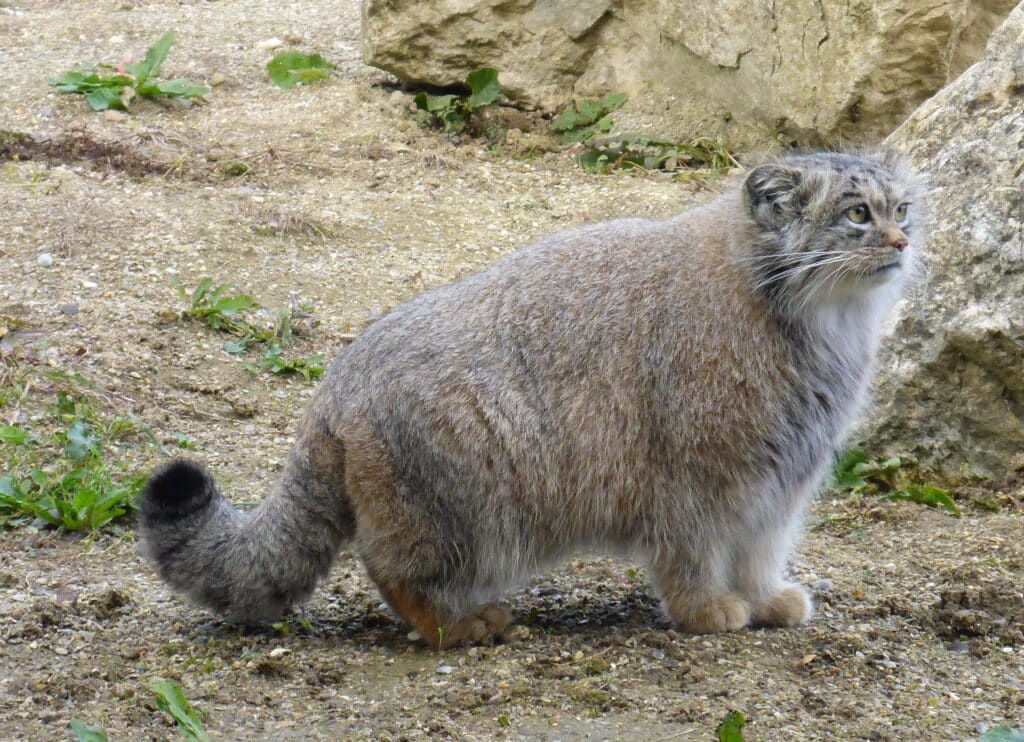
In 2024, I will visit Mongolia again in late June-early July, if you are interested in joining me on a Manul Tour. By participating in this tour, you support the local conservation efforts of SWCCF. It’s a working trip for me, so I am neither a tour guide nor a travel agent, but would love to show you the wonderful world of manul. By the way, Otgonabayar also offers snow leopard tours in western Mongolia, where he and his team have habituated a few snow leopards and are working with rural people to improve their livestock corrals. You can join me for that tour also, probably in early November 2024.
If you would like to join me on this Manul Tour next year, please reach out to Buyandelger Suuri at buyandelger@gmail.com.




